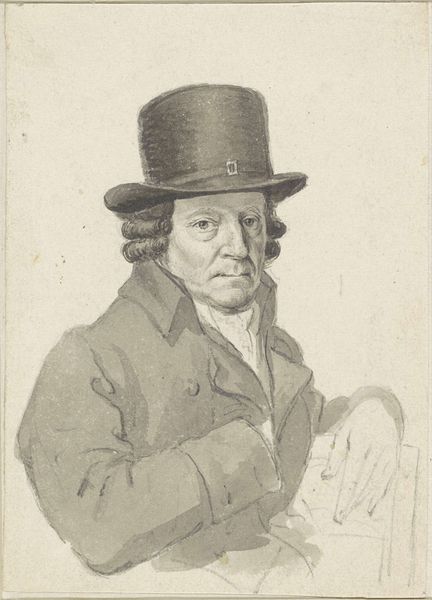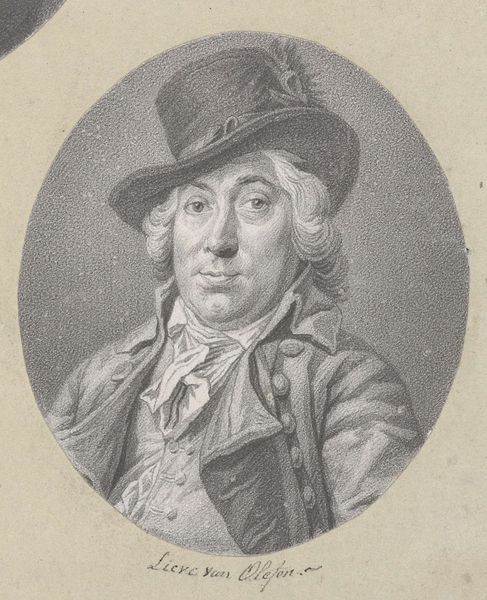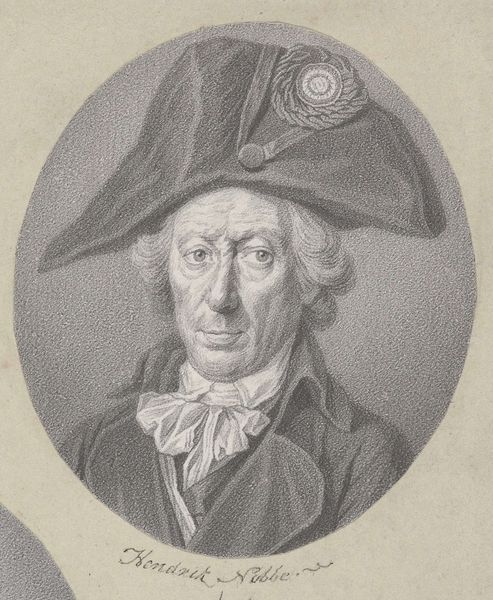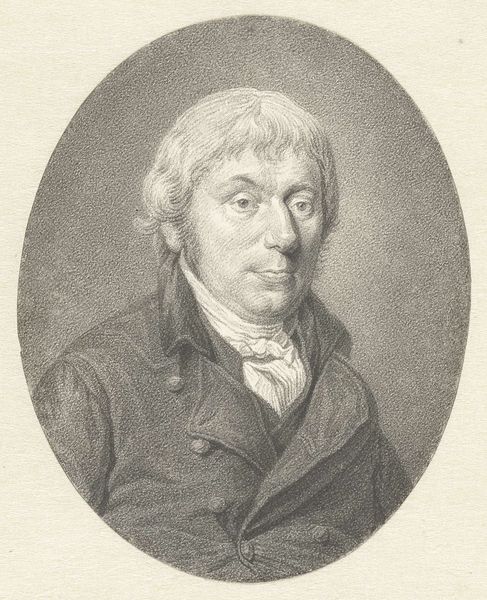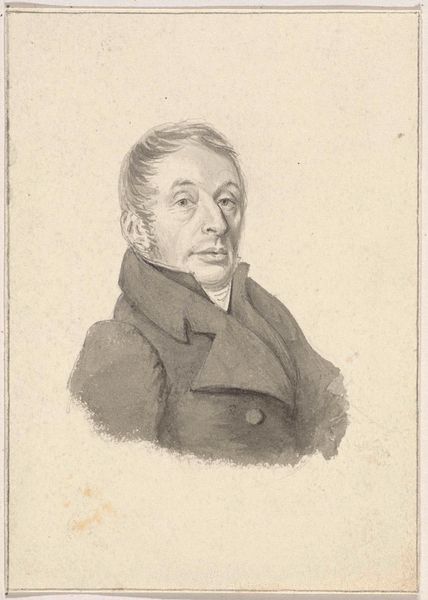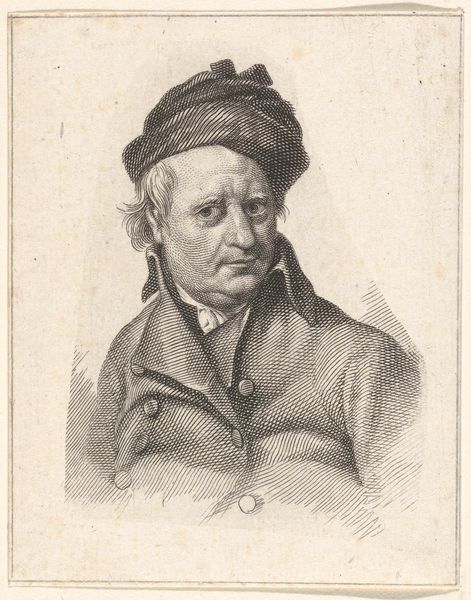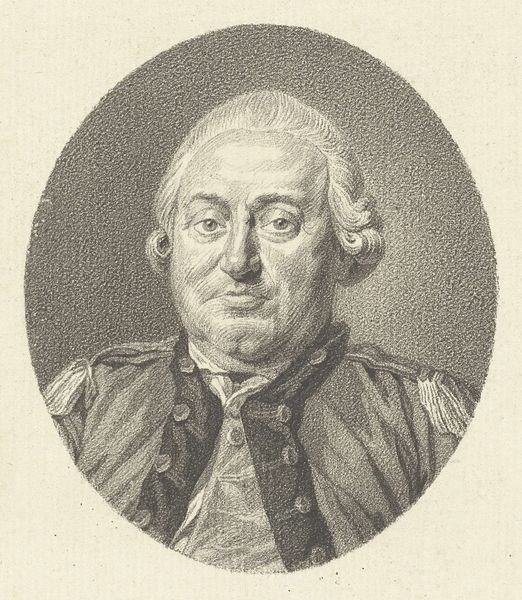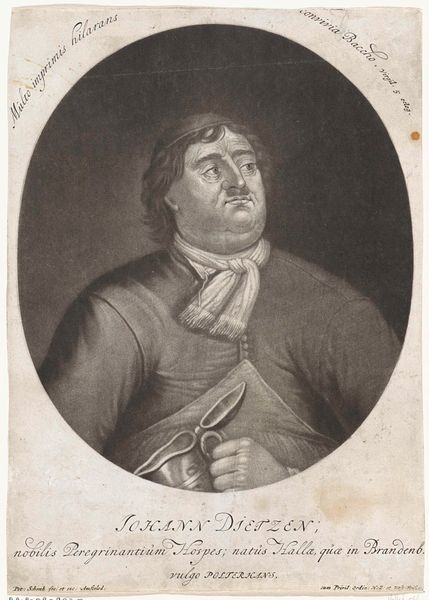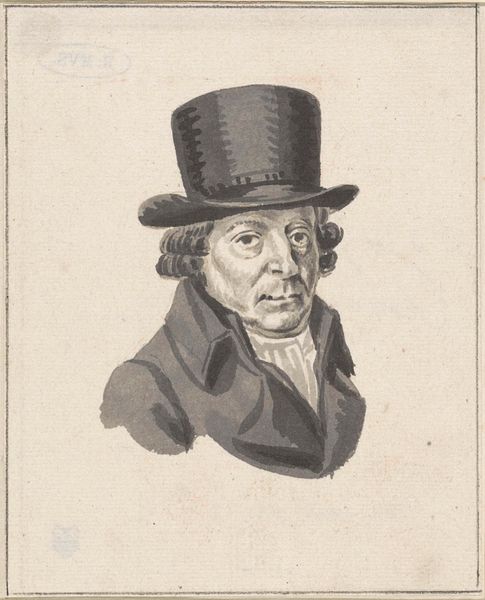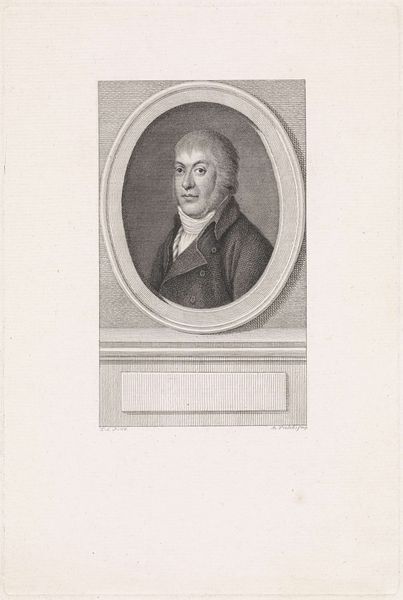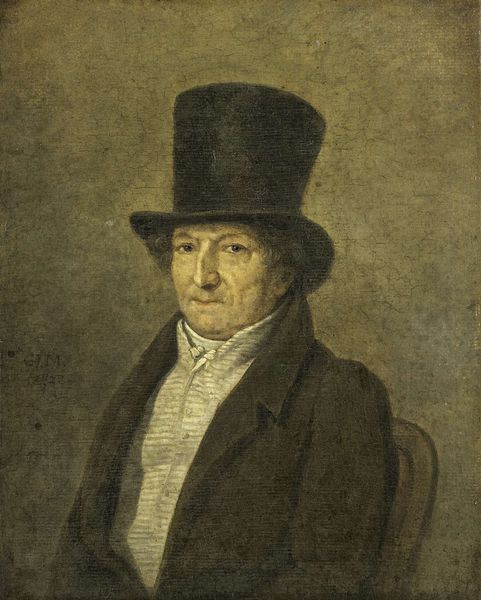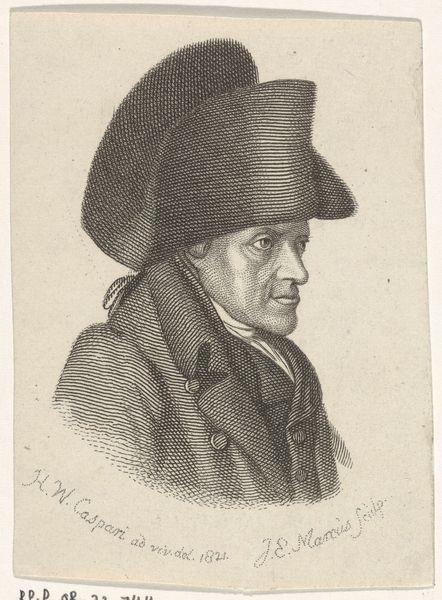
drawing, graphite
#
portrait
#
drawing
#
neoclacissism
#
romanticism
#
graphite
Dimensions: height 142 mm, width 107 mm
Copyright: Rijks Museum: Open Domain
Editor: Here we have "Kunstschilder Gabriel van Royen," a graphite drawing from 1800 by Johannes Cornelis Mertens, housed at the Rijksmuseum. He looks like quite a character! Very self-assured with his arms crossed. What can you tell me about how this image functions as a representation of artistic identity? Curator: A fascinating question. Looking at this portrait, consider how artistic identity was being shaped and presented at the turn of the 19th century. We see elements of both Neoclassicism and Romanticism here, styles deeply intertwined with socio-political shifts. The drawing medium itself is interesting; graphite allowed for wider circulation and accessibility, expanding the artist's potential public. Does this tell us about changes to artistic roles? Editor: I hadn't thought about the graphite as a democratizing force. The way he’s posed – almost confrontational – suggests a real person, not just an ideal, so maybe it hints at something new regarding the role of the artist in society? Curator: Precisely! Consider the institutional contexts. Museums like the Rijksmuseum, gaining prominence then, helped establish artists as figures worthy of public veneration. Portraits like this both reflect and reinforce that evolving perception. The clothing style could signify more about his bourgeois class. Who do you think saw the original work at the time and who do you think Mertens was intending to see it? Editor: Good point! It would most likely be wealthy, upper-class patrons who would have seen this type of artwork. I see now that it portrays the artist as a respected, established figure, not necessarily radical or rebellious. The drawing is serving to cement his position within the artistic and social hierarchies of the time. Curator: And that's a great reminder of the complex and often contradictory nature of artistic expression within its socio-historical context. Thank you for bringing that insightful perspective to light. Editor: Thanks! That definitely shifted how I view it, knowing it's more than just a likeness; it’s a social and political statement.
Comments
No comments
Be the first to comment and join the conversation on the ultimate creative platform.
